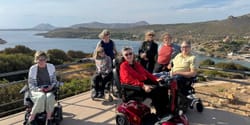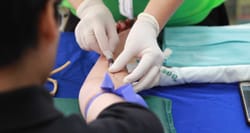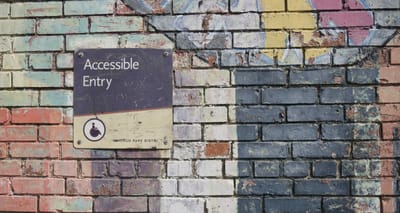It has been two months since my last flight on a commercial airliner — the longest period that I have gone without flying since 2014, when I emerged from a 16 month period of hospitalization and rehab following my 2012 car accident.
Without a doubt, flying is a privilege and a luxury — a fact that is even more clear in this time of restricted movement. A bit downtrodden, I am experiencing the typical symptoms and sadness of withdraw from cherished freedoms, just as we all are during this time.
Like most of you, I am eager to resume the activities that were taken for granted not so long ago: meeting friends and family, dining out, going to the cinema, shopping at the mall, attending a sporting event, traveling for pleasure, etc.
Travel is already starting to rebound
The uncertainty surrounding our return to the lives we knew just two months ago makes it more difficult to cope with the present reality. But as cities, states and some countries begin to lift stay-at-home orders, there is potential for hope — some flickering light at the end of the tunnel.
Yesterday, the Transportation Security Administration reported that 215,645 individuals came through its airport security checkpoints on Monday, May 11 — about 91% fewer than one year earlier. There has been some positive movement in the short term, however, as Monday’s count was 50,000 higher than the week before. For the travel industry and the economy, that’s great news, but the public health impact of interstate travel remains unclear.
With more people taking to the skies, airlines will benefit from a much-needed increase in revenue. Some industry analysts and even the CEO of Boeing have suggested that a number of U.S. carriers could be on the verge of bankruptcy. For an industry in dire straights, each additional passenger that finds the confidence to travel will be an answered prayer for airline executives.
When is the right time to reopen the economy?
While we all hope that the travel industry will survive and that its employees will be saved from the unemployment rolls, our greatest concern must be the continued health and wellbeing of every person. Readers of this website are more likely to be among a higher-risk group, for whom contracting the coronavirus could prove fatal. I worry that actions taken to reopen the economy too quickly will prolong the isolation of disabled people and lead to a greater loss of life than would otherwise be likely.
Each of America’s 50 states and each of the world’s countries are at different stages of combating the coronavirus. But the war is truly being waged on a much more local level, on a county-by-county and city-by-city basis. And so, when we think about the movement of people, we must recognize that movement within a neighborhood or community is one thing, while interstate travel is quite another.
Understanding that this pandemic began with a single infected person and that widespread transmission was possible because of its ability to be passed on by asymptomatic hosts, we must ask ourselves — how sensible is it to permit (and in some cases promote) nonessential interstate travel at this juncture? I will leave that question for you to answer.
Open vs. Closed: The scale is tipping
No matter our politics, where we live or what we believe, we must recognize that government leaders with any degree of decision-making power are in a tough spot. They are walking a tight rope, performing a balancing act between loss of life and economic ruin. It’s the most unenviable position that I can imagine, with the hopes, dreams, livelihoods and lives of every person hanging on their decisions. It’s a complex problem with no perfect answer.
With the unemployment rate in the United States nearing 15%, the highest since the Great Depression, the scale may be tipping. An increasing number of governments are determined to restart their economies to prevent further collapse. As a result, a number of destinations in the United States, Europe and elsewhere are preparing for the summer travel season, hoping to attract whatever business they can.
Disabled travel will rebound more slowly
Were there no pandemic, I would be in the beautiful city of Dresden, Germany today. That trip was cancelled, like so many others that I would have taken over the past two months. Staying home was the right thing to do — not only in consideration of my own health, but in the interest of protecting others who are especially vulnerable. That said, we will not stay home forever.
With many destinations planning to reopen and Carnival Cruise lines reporting that cruise bookings for August 2020 are up 200% over August 2019, individuals will clearly have plenty of opportunities to vacation this summer.
Each of us will weigh the risks to determine when to resume leisure travel, and we are all likely to reach different conclusions. Social media is and will continue to be filled with criticism of those who are perceived to be traveling too soon. Some travelers will feel more at ease given their age or health status, while this website’s readers are likely to take a more cautious approach. For most people with disabilities, travel will not be a consideration this summer.
I do expect to travel again this year
On more than one occasion, I have been called “the face of accessible travel” and I take that implied responsibility very seriously. In this environment, perhaps more than ever, my actions have meaning and set an example.
Over the past two months in quarantine, I have carefully considered the state of public health, strategies for protecting myself and others from the virus, and the risks associated with travel. The situation is unpredictable and rapidly evolving. And, while I had initially hoped to resume some domestic travel in June, I do not believe the situation will have improved enough by then.
Should we manage to avoid the so-called “second wave” that many fear, I now expect to begin traveling and exploring the world in July. My first planned trip is to the great state of Alaska, where there are great airfare deals and rock-bottom rates on hotel rooms to be found. Following Alaska, I hope to visit Europe — starting, perhaps, with a trip to Greece. That’s my plan, but it is of course subject to change should conditions deteriorate.
Final Thoughts
Although my isolation and the associated lack of freedom has been lonely and a bit depressing, I am encouraged by the sacrifices that we have all made for the benefit of others. While I know that many people are restless and eager to reclaim their normal (myself included), I believe that holding tight for just a bit longer will benefit us all. We should not allow the sacrifices that we have made in these months to go to waste and, if we stay the course, I am confident that we’ll soon regain many of the freedoms that we long for.















